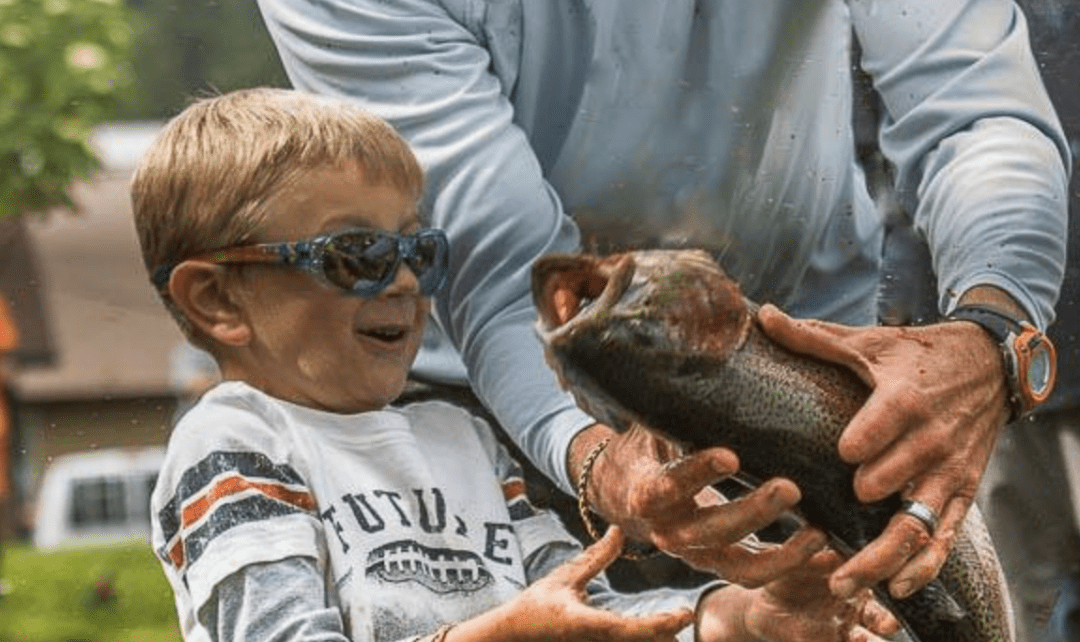Big Sky Resort Opens for Summer Season
Big Sky, Mont. (June 20, 2019) – Big Sky Resort, southwest Montana’s premier summer playground with over 50 miles of hiking and biking trails, is open for the summer season. Big Sky’s proximity to Yellowstone National Park makes it the perfect basecamp for summer adventures of all kinds.
50+ MILES OF HIKING & BIKING TRAILS
Big Sky Resort has more than 50 miles of hiking and biking trails available right out of Mountain Village. Enjoy chairlift-serviced downhill mountain biking for all levels and abilities, with connector trails that allow bikers to ride six miles of flow trail through forests and meadows to Big Sky Town Center. Big Sky’s biking trails offer a diversity of beginner flow trails and steep technical trails, where every rider can find a trail that suits their ability and stoke.
Many existing trails are being improved this summer season, including a complete rework on Tango to better fit in the progression between Rabbit Run and Gambler.
“We are identifying gaps in our trail progression and adding trails to fill the gaps. Tango, one of our existing trails, is being reworked as a machine-built freeride trail, maintaining its current corridor and shifting corridors when needed to maintain a lower grade. The goal is to create an easier blue freeride trail. Big Sky Resort is a family-friendly destination, so making our mountain more accessible to everyone, especially those new to the sport, is essential,” said Christine Baker, Mountain Sports manager, Big Sky Resort.
Bike rentals are available at Different Spokes, Big Sky’s bike shop located in Mountain Village. Rentals include mountain bikes and Strider bikes for children. Different Spokes is a one-stop shop for all biking needs, including downhill bike coaching, bike haul tickets, and scenic lift tickets. Additionally, RAD Bikes will be open in Mountain Village this summer for bike tuning and repairs.
With more than 30 miles of hiking trails at Big Sky, escaping the rigors of everyday life is just a few steps away. Guided hikes with expert guides introduces hikers of all ability levels to the tranquil summer trails, plus information about local Big Sky flora and fauna. Many hiking trails connect to U.S. Forest Service lands, which allows for full-day treks into Montana’s beautiful backcountry.
GUIDED ACTIVITIES
Escape the heat this summer to Montana’s highest scenic overlook: Lone Peak. Ride a chairlift, expedition vehicle, and tram to 11,166 feet - no hike required - to the summit of Lone Mountain for views of three states, two national parks and mountain ranges for miles. Additionally, guides are available daily for the Nature and the Adventure zipline tours, guided hiking and downhill mountain biking.
FAMILY FUN
An abundance of family-friendly activities are available in Mountain Village. Parents and children alike will enjoy the bungee trampoline, climbing wall, giant swing, miniature golf, gemstone mining, jungle gym playground, marble run, archery, and disc golf.
BASECAMP TO YELLOWSTONE
Big Sky Resort is located just one hour from the west entrance to Yellowstone National Park. If geysers and wildlife top your summer bucket list, but roughing it isn’t exactly your thing - enjoy the creature comforts of a resort stay at Big Sky. This summer, the Big Adventure package offers a complimentary activity for each night of lodging booked, for each person on the reservation. Complimentary activities include the Lone Peak Expedition, ziplines, guided hike, horseback riding, whitewater rafting, and more. Resort accommodations, a full-service spa and salon, pool, and dining are the perfect complement to your trip to Yellowstone National Park.
SOLACE SPA & SALON
Complete your big mountain adventure with body treatments, facials, massages, and salon services. Transcend into an ultimate state of relaxation with an Elevated Escape package, which includes a CBD body treatment and CBD massage combination. Rebalance, reset, and relax with full spectrum hemp infused treatments and Phia energy enhancement, a line of wellness products engineered with bioenergetics to fit your signature frequency. In addition to warm relaxation and treatment rooms, spa treatments include full-day access to the resort’s steam room, sauna, fitness center, pool and hot tub. Located in the Huntley Lodge in Mountain Village, browse around Solace Spa’s retail storefront for women’s clothing, jewelry, accessories, and unique gifts for the body, mind & spirit.
DINING
New this summer, Andiamo is open for lunch and dinner, serving up classic Italian trattoria dishes inspired by Executive Chef Ryan Solien’s experience studying Italian cuisine in Rome. Chef Ryan has completely reimagined the crust and tomato sauce recipes in Pizza Works and Andiamo pizza to emulate a more traditional Neopolitan-style slice. For your espresso fix, head to Mountain Mocha’s new location in the Firehole Lounge in the Huntley Lodge lobby. Chet’s, also located in the Huntley Lodge, is open for breakfast and dinner. Carabiner, located in the Summit Hotel, is open for breakfast, lunch and dinner.
GOLF
The Big Sky Golf Course is an 18-hole, par 72 course at 6,300 feet above sea level, offering spectacular views of Lone Peak. The golf course, which winds along the wildlife-rich banks of the West Fork of the Gallatin River, was designed by the late great Arnold Palmer. Don’t miss an al fresco brunch at the Bunker Deck & Grill before or after heading out on the course. Big Sky Golf Course and the Bunker Deck and Grill opened May 18, 2019. Bunker Brunch will begin on June 29, and continue throughout the summer.










News Comments
Finally, art students need these amenities for graphic designing and essay writing.
8 Essential Factors to Consider Before Joining College
bupole
Wednesday, Dec. 11, 2024
Thank you
Open Auditions for Annie
Monday, Sep. 16, 2024
I’m at the Bozeman airport where your painting, “Blowing East” is displayed. It’s absolutely gorgeous! Bravo, Marci!!
The Artists’ Gallery in Bozeman’s Emerson Cultural Center May Exhibits
Sunday, Jun. 30, 2024
This is so typical of a sign in, which we should not have to do to check if we or some one in our party got a permit. I have been working or "creating an account" for 30 minutes and just get the same ...
Smith River permit drawing results available
Sunday, Mar. 10, 2024